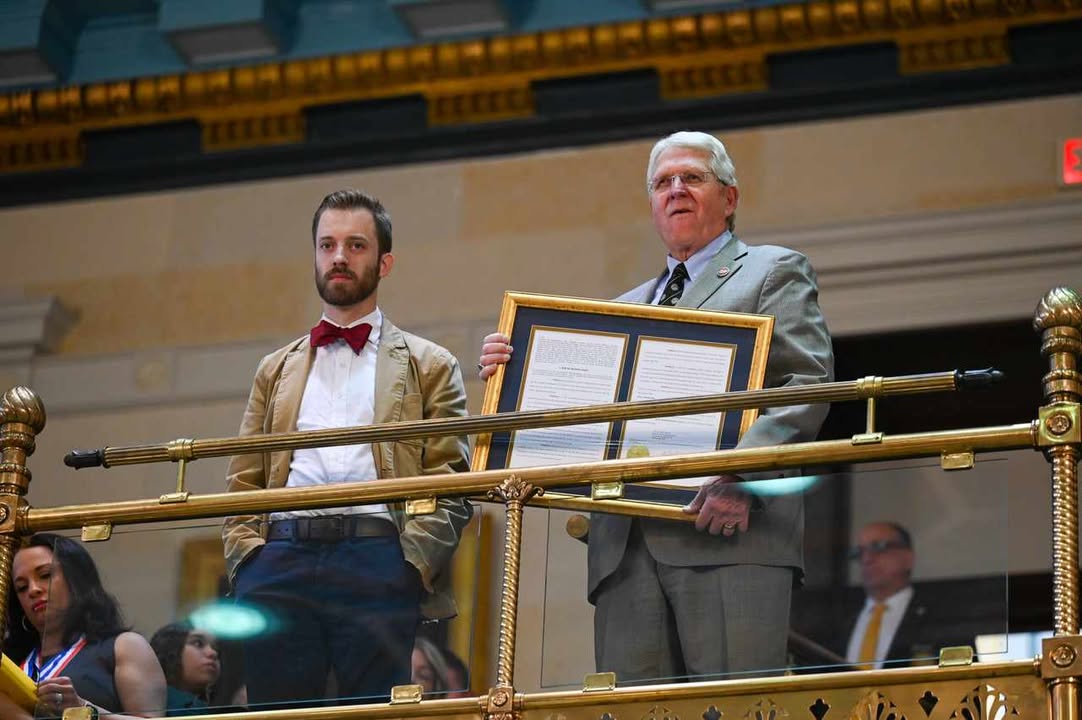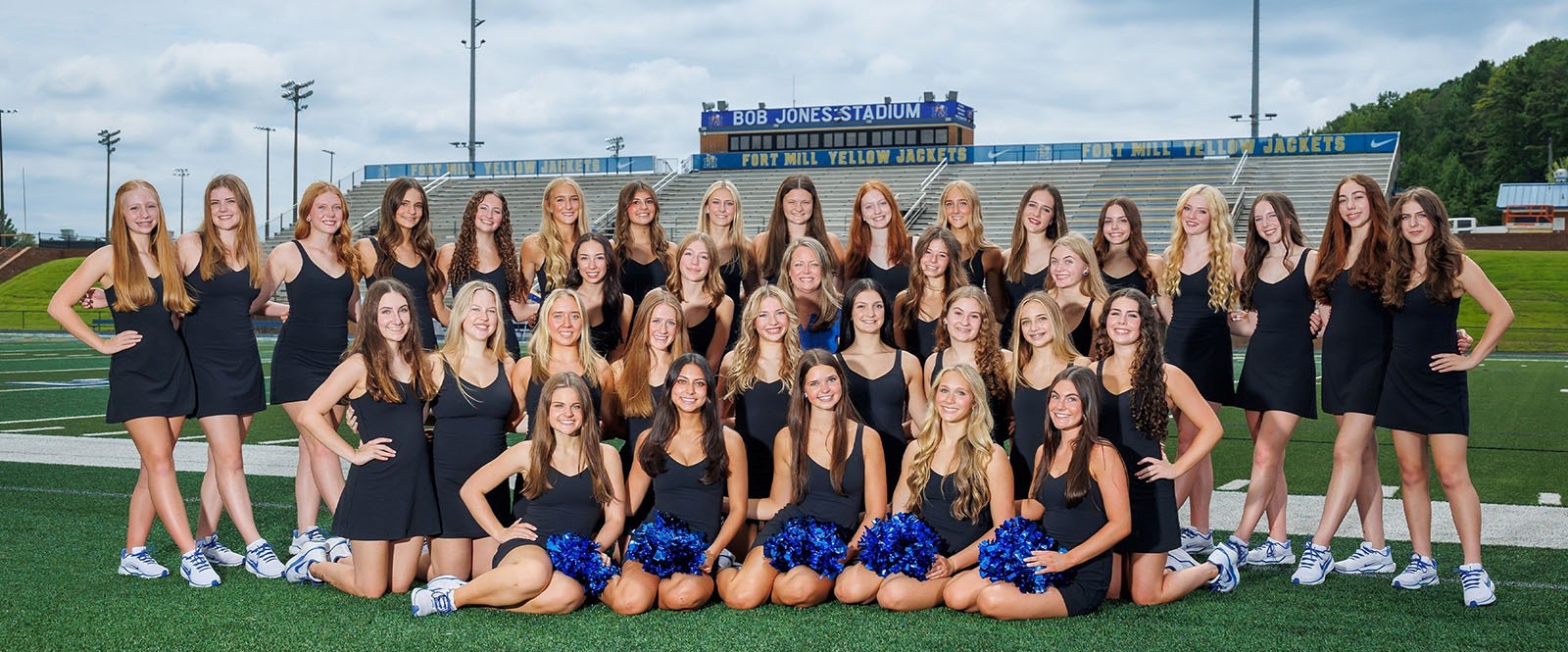COLUMBIA, S.C. — The South Carolina House of Representatives has formally recognized one of the longest-running musical acts in American history: the Legendary Briarhoppers. State Rep. Tommy Pope presented a proclamation honoring the iconic bluegrass band for 91 years of continuous entertainment. Zach Lemhouse accepted the honor on behalf of the group during a special presentation at the State House in Columbia.
Founded in 1934 and now based in Clover, South Carolina, the Briarhoppers hold a remarkable place in American music history as the longest-lived bluegrass band—and possibly the longest-continuing string band—in the country.
The group’s origins trace back to a bold improvisation by Charles Crutchfield at WBT Radio in Charlotte. When asked by a prospective sponsor whether the station had a “hillbilly band,” Crutchfield replied yes—despite not yet having one. That quick thinking sparked the creation of the Briarhoppers, named during a hunting trip when a startled announcer shouted, “Look at that briarhopper!”
The original lineup included Johnny McAllister, Big Bill Davis, Don White, Thorpe Westerfield, Clarence Etters, and Jane Bartlett. The Briarhoppers quickly became a staple of WBT’s programming, known for their mix of country string music and folksy humor. The band famously opened each broadcast by asking listeners, “Do you know what hit is?”—to which fans across the region would cheer, “Hit’s Briarhopper Time!”
At their peak in the 1940s, the Briarhoppers achieved national fame, performing on the CBS network’s Carolina Hayride and touring in two separate units to meet audience demand. Their fan base included legends like Bill Monroe, Earl Scruggs, Doc Watson, Buddy Holly, and even Elvis Presley.
Although their radio run ended in 1951, the Briarhoppers never stopped playing. A revival in the 1970s and a second resurgence in the 1980s returned them to bluegrass festivals and public radio programs such as A Prairie Home Companion. Today, under the leadership of Tom Warlick, the band continues to perform its classic tunes, new music, and even the original commercials from its early radio days, including spots for Peruna and Kolor Bak.
The Briarhoppers have been inducted into both the WBT Radio Hall of Fame and the North Carolina Music Hall of Fame. Now, with this recognition from the South Carolina Legislature, their legacy as cultural icons of the Carolinas continues to grow.
In accepting the resolution, the band expressed its gratitude to Rep. Pope and the State of South Carolina, stating, “We’re honored by this recognition and proud to call Clover our home.”
A HOUSE RESOLUTION
TO CONGRATULATE THE LEGENDARY BRIARHOPPERS AT THE CELEBRATION OF THE GROUP’S NINETY-FIRST ANNIVERSARY AND TO WISH THIS STORIED BLUEGRASS BAND MANY MORE YEARS OF CONTINUED SUCCESS.
Whereas, the South Carolina House of Representatives is pleased to learn that the Legendary Briarhoppers, now based in Clover, have been performing bluegrass music for ninety-one years, making this well-loved group the longest-lived bluegrass band ever and possibly the longest-continuing string band; and
Whereas, in 1934, a potential advertiser called WBT Radio’s Charles Crutchfield to ask if the station had a hillbilly band to help advertise its products. Telling a fib, Crutch said “Yes,” which led to the birth of the Briarhoppers. The name comes from WBT announcer Bill Bivens, who, during a hunting trip with Crutch, was startled by a rabbit jumping out of a thicket. Bill yelled, “Look at that briarhopper!” At that moment, Crutch found the name for his hillbilly band; and
Whereas, the Briarhoppers became the house band for WBT, which featured country or string band music with folksy humor. From the first radio show in 1934, the band asked the crowd, “Do you know what hit is?” And the audience replied,”Hit’s Briarhopper Time!”; and
Whereas, original band members were Johnny McAllister, Big Bill Davis, Don White, Thorpe Westerfield, Clarence Etters, and Jane Bartlett. Among the Briarhoppers’ numerous fans have been Bill Monroe, Doc Watson, Earl Scruggs (who filled in on banjo a few times), Curly Seckler, Elvis Presley, Buddy Holly, and many other entertainment stars; and
Whereas, during the summer of 1945, WBT originated Carolina Hayride, a Saturday afternoon barn dance broadcast coast to coast on the CBS radio network, featuring the Briarhoppers. In 1946, after World War II ended, the Briarhoppers were so popular that they were divided into Unit One and Unit Two for personal appearances; and
Whereas, the Briarhoppers’ radio show ended in 1951, due to a change in public taste regarding country music, but the band continued to perform at small venues. The Charlotte Observer‘s Dot Jackson reported in 1970 on one of the band’s informal concerts, and the band became popular again; and
Whereas, in 1985, the Briarhoppers started to perform once again at bluegrass festivals all over the Southeast. They also performed on NPR’s Prairie Home Companion and were subjects of the PBS-Charlotte program Country in the Carolinas. Today, Tom Warlick heads the band with their stage show, which includes the old Briarhopper songs, new songs, and the original scripted commercials of Peruna, Kolor Bak, Zymole Trokeys, and Radio Girl Perfume; and
Whereas, an immensely popular group on WBT during the Golden Age of Radio, the Briarhoppers have been inducted into the WBT Radio Hall of Fame and the North Carolina Music Hall of Fame. Now, therefore,
Be it resolved by the House of Representatives:
That the members of the South Carolina House of Representatives, by this resolution, congratulate the Legendary Briarhoppers at the celebration of the group’s ninety-first anniversary and wish this storied bluegrass band many more years of continued success.
Be it further resolved that a copy of this resolution be presented to the Legendary Briarhoppers.
—-XX—-
Sign up for our Sunday Spectator. Delivered to your inbox every Sunday, with all the news from the week.

















